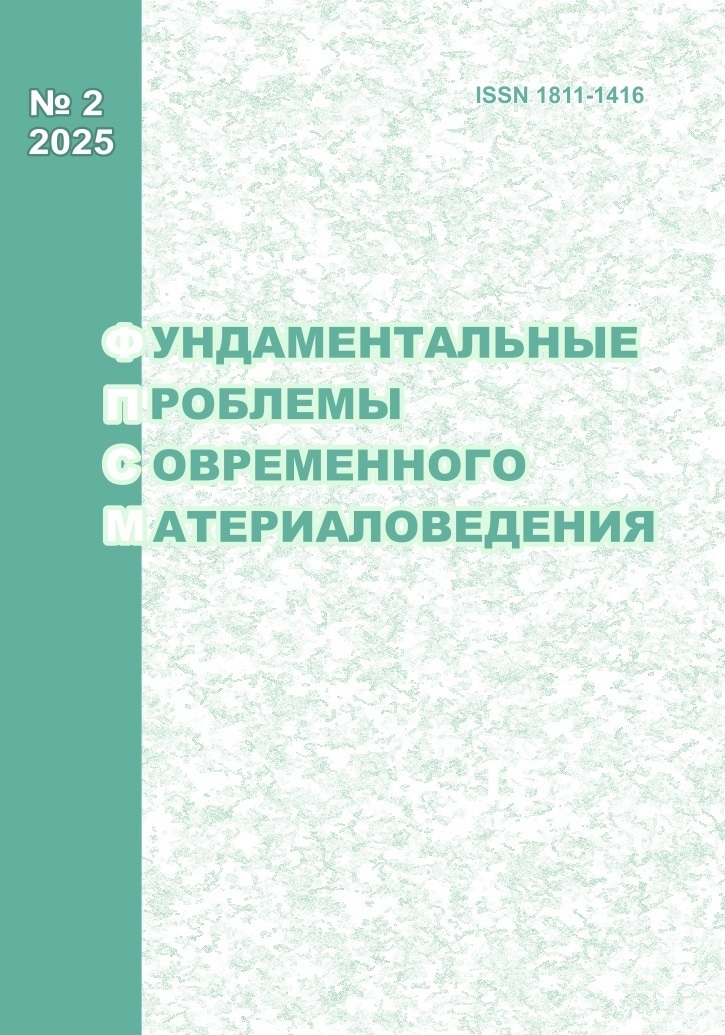DEFORMATION BEHAVIOR OF QUASI-AMORPHOUS RIBBONS OF SOFT MAGNETIC ALLOYS
10.25712/ASTU.1811-1416.2025.02.011
Keywords:
soft magnetic alloys, structure, mechanical properties, deformation behavior, magnetic properties.Abstract
A soft magnetic Fe-Ni-Si-B (2NSR) alloy ribbon doped with copper and niobium was produced by melt spinning (spinning). Using modern physical materials science methods, the mechanical and magnetic properties, as well as the structural-phase states of the alloy, were studied. The ultimate tensile strength of the 2NSR ribbon is 615 MPa with a low elongation to failure (εₚ = 0.68%), and the elastic modulus is E = 91 GPa. The Digital Image Correlation (DIC) method, implemented via the "VIC 2D" software (Correlated Solution Inc., USA), was used to construct strain distribution fields for longitudinal and transverse components based on an optical extensometer. Recording was performed at 1 Hz under loading along the spinning direction. The elemental composition distribution of the ribbon was analyzed using micro-X-ray spectral analysis, revealing inhomogeneities in copper and carbon. Scanning electron microscopy of the fracture surface revealed a morphological two-layer structure of the ribbon, which is associated with the observed macro-localization due to incompatible strain development in each layer. The two-layer structure may be attributed to insufficient cobalt content and the structural inheritance from the spinning disk. The deformation behavior of the 2NSR ribbon was compared with other soft magnetic materials (30KSR and 84KHSR). The physical reasons for the differences in the fracture surfaces of the 2NSR, 84KHSR, and 30KSR alloy ribbons under static tension are discussed. Based on the comprehensive analysis of deformation behavior, it is concluded that the Nb- and Cu-doped 2NSR alloy is competitive in the class of soft magnetic amorphous ribbons.











 Journal «Fundamental’nye problemy sovremennogo materialovedenia / Basic Problems of Material Science»
Journal «Fundamental’nye problemy sovremennogo materialovedenia / Basic Problems of Material Science» This work is licensed under a
This work is licensed under a 
